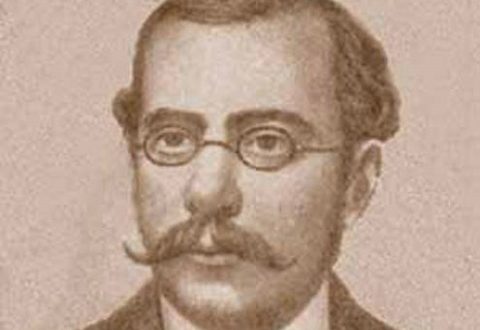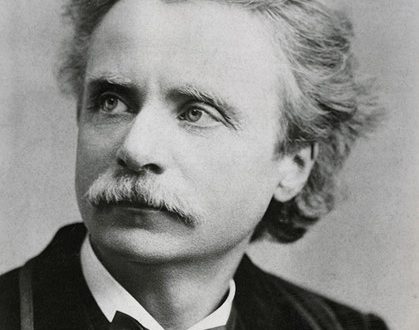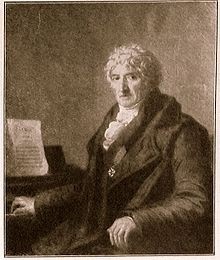
Mikhail Ivanovich Chulaki |
Mikhail Chulaki
M. I. Chulaki was born in Simferopol, in the family of an employee. His first musical impressions are connected with his native city. Classical symphonic music often sounded here under the baton of famous conductors – L. Steinberg, N. Malko. The largest performing musicians came here – E. Petri, N. Milshtein, S. Kozolupov and others.
Chulaki received his primary professional education at the Simferopol Musical College. Chulaki’s first mentor in composition was I. I. Chernov, a student of N. A. Rimsky-Korsakov. This indirect connection with the traditions of the New Russian Musical School was reflected in the first orchestral compositions, written largely under the influence of Rimsky-Korsakov’s music. At the Leningrad Conservatory, where Chulaki entered in 1926, the composition teacher was first also a student of Rimsky-Korsakov, M. M. Chernov, and only then the famous Soviet composer V. V. Shcherbachev. The diploma works of the young composer were the First Symphony (first performed in Kislovodsk), the music of which, according to the author himself, was significantly influenced by the images of the symphonic works of A.P. Borodin, and the suite for two pianos “May Pictures”, later repeatedly performed by famous Soviet pianists and already expressing in many ways the individuality of the author.
After graduating from the conservatory, the composer’s interest was mainly directed to the genre, in which he was expected to succeed. Already Chulaki’s first ballet, The Tale of the Priest and His Worker Balda (after A. Pushkin, 1939), was noticed by the public, had an extensive press, and staged by the Leningrad Maly Opera Theater (MALEGOT) was shown in Moscow at the decade of Leningrad art. Chulaki’s two subsequent ballets – “The Imaginary Groom” (after C. Goldoni, 1946) and “Youth” (after N. Ostrovsky, 1949), also staged for the first time by MALEGOT, were awarded the USSR State Prizes (in 1949 and 1950).
The world of theater has also left its mark on Chulaki’s symphonic work. This is especially evident in his Second Symphony, dedicated to the victory of the Soviet people in the Great Patriotic War (1946, State Prize of the USSR – 1947), as well as in the symphonic cycle “Songs and Dances of Old France”, where the composer thinks in many ways theatrically, creating colorful images, visibly perceptible. The Third Symphony (symphony-concert, 1959) was written in the same vein, as well as the concert piece for the ensemble of violinists of the Bolshoi Theater – “Russian Holiday”, a bright work of a virtuoso character, which immediately gained wide popularity, was repeatedly performed on concert stages and on the radio, recorded on a gramophone record.
Among the composer’s works in other genres, one should first of all mention the cantata “On the banks of the Volkhov”, created in 1944, during Chulaka’s stay on the Volkhov front. This work was a significant contribution to Soviet music, reflecting the heroic war years.
In the field of vocal and choral music, the most significant work of Chulaka is the cycle of choirs a cappella “Lenin with us” to the verses of M. Lisyansky, written in 1960. Subsequently, in the 60-70s, the composer created a number of vocal compositions, among which the cycles for voice and piano “Abundance” to the verses of W. Whitman and “The Years Fly” to the verses of Vs. Grekov.
The constant interest of the composer in the musical and theatrical genre caused the appearance of the ballet “Ivan the Terrible” based on the music by S. S. Prokofiev for the film of the same name. The composition and musical version of the ballet was made by Chulaki by order of the Bolshoi Theater of the USSR, where in 1975 it was staged, which greatly enriched the theater’s repertoire and won success with Soviet and foreign audiences.
Along with creativity, Chulaki paid great attention to pedagogical activity. For fifty years he passed on his knowledge and rich experience to young musicians: in 1933 he began teaching at the Leningrad Conservatory (classes of composition and instrumentation), since 1948 his name has been among the teachers at the Moscow Conservatory. Since 1962 he has been a professor at the conservatory. His students in different years were A. Abbasov, V. Akhmedov, N. Shakhmatov, K. Katsman, E. Krylatov, A. Nemtin, M. Reuterstein, T. Vasilyeva, A. Samonov, M. Bobylev, T. Kazhgaliev, S. Zhukov, V. Belyaev and many others.
In Chulaka’s class, there was always an atmosphere of goodwill and sincerity. The teacher carefully treated the creative individualities of his students, trying to develop their natural abilities in an organic unity with the development of a rich arsenal of modern composing techniques. The result of his many years of pedagogical work in the field of instrumentation was the book “Tools of the Symphony Orchestra” (1950) – the most popular textbook, which has already gone through four editions.
Of great interest to the modern reader are Chulaki’s memoir articles, published at various times in periodicals and in special monographic collections, about Yu. F. Fayer, A. Sh. Melik-Pashayev, B. Britten, L. B. E. G. Gilels, M. V. Yudina, I. I. Dzerzhinsky, V. V. Shcherbachev and other outstanding musicians.
The creative life of Mikhail Ivanovich is inextricably linked with musical and social activities. He was the director and artistic director of the Leningrad State Philharmonic Society (1937-1939), in 1948 he became chairman of the Leningrad Union of Composers and in the same year at the First All-Union Congress he was elected secretary of the Union of Soviet Composers of the USSR; in 1951 he was appointed deputy chairman of the Committee for Arts under the Council of Ministers of the USSR; in 1955 – director of the Bolshoi Theater of the USSR; from 1959 to 1963 Chulaki was the secretary of the Union of Composers of the RSFSR. In 1963, he again headed the Bolshoi Theatre, this time as director and artistic director.
For all the time of his leadership, many works of Soviet and foreign art were staged on the stage of this theater for the first time, including operas: “Mother” by T. N. Khrennikov, “Nikita Vershinin” by Dm. B. Kabalevsky, “War and Peace” and “Semyon Kotko” by S. S. Prokofiev, “October” by V. I. Muradeli, “Optimistic Tragedy” by A. N. Kholminov, “The Taming of the Shrew” by V. Ya. Shebalin, “ Jenufa” by L. Janachka, “A Midsummer Night’s Dream” by B. Britten; the opera-ballet The Snow Queen by M.R. Rauchverger; ballets: “Leyli and Mejnun” by S. A. Balasanyan, “Stone Flower” by Prokofiev, “Icarus” by S. S. Slonimsky, “The Legend of Love” by A. D. Melikov, “Spartacus” by A. I. Khachaturian, “Carmen suite” by R. K. Shchedrin, “Assel” by V. A. Vlasov, “Shurale” by F. Z. Yarullin.
M. I. Chulaki was elected a deputy of the Supreme Soviet of the RSFSR VI and VII convocations, was a delegate to the XXIV Congress of the CPSU. For his merits in the development of Soviet musical art, he was awarded the title of People’s Artist of the RSFSR and presented with awards – the Order of the Red Banner of Labor, the Order of Friendship of Peoples and the Badge of Honor.
Mikhail Ivanovich Chulaki died on January 29, 1989 in Moscow.
L. Sidelnikov





